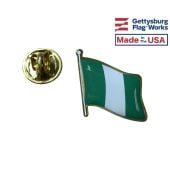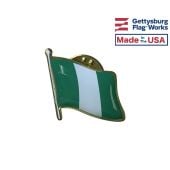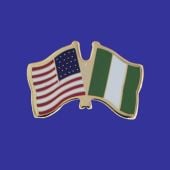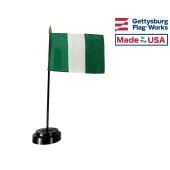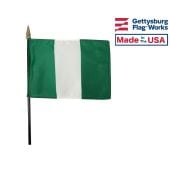Buy Nigeria Flags
Flag of Nigeria
The history of the Nigerian flag is unusually long and complicated. The modern nation began as part of the British Empire, but Nigeria used far more flags during the colonial period that many other nations. The current Nigerian national flag does not show any significant influence from those colonial flags, which makes it a strong symbol of Nigerian independence and the nation's determination to move away from its colonial past and into a brighter future.
- Capital of Nigeria: Abuja
- Area of Nigeria: 910,768 sq. km
- Languages used in Nigeria: English (official), Hausa, Yoruba, Igbo (Ibo), Fulani
- Religions in Nigeria: Muslim, Christian, indigenous beliefs
Colors and Symbolism of the Nigerian Flag
The flag of Nigeria is made up of three vertical stripes that alternate between green and white. The green stripes were included in the flag's design in order to represent the nation's wealth and natural resources, while the white stripe serves as a symbol of peace.
History of the Nigerian National Flag
The first Nigerian flag was that of the Royal Niger Company, which came into use in 1887. It had a white field with the Union Jack in the canton and the colony's seal in the fly. That seal consisted of a Y-shaped emblem with the company's motto written on it that was surrounded by the outline of a red circle. This flag stands out from every other flag of Nigeria from the colonial period because it has a white field. The majority of other colonial flags in the British Empire, including the other eight flags of Nigeria, featured a dark blue field instead of the white.
Eight other colonial flags predate the modern Nigerian national flag. All of them follow the standard pattern for British colonial flags, with a blue field that was decorated with the Union Jack and the colonial seal. Very few of those flags were intended to replace an existing flag when they were adopted. One of them was the second flag of the Royal Niger Company which was updated to follow the common pattern in 1888, but the others were used to represent smaller colonies that would eventually merge to form modern Nigeria. The most important of those mergers resulted in the formation of the Colony and Protectorate of Nigeria in 1914. It used a red circle with a green, six-pointed star that surrounded a crown as its emblem. The modern flag of Nigeria was designed in 1959 and replaced that flag when the nation gained its independence in 1960.


